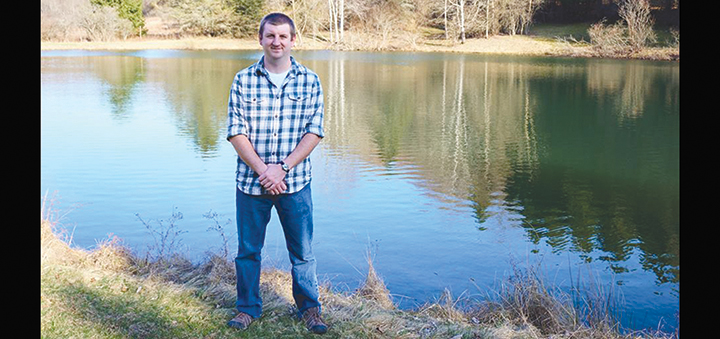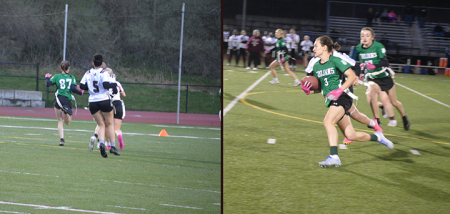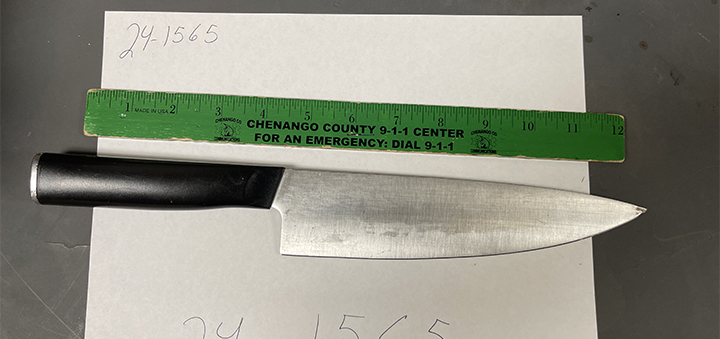Modern Muzzleloading
Published:
November 20th, 2019
By:
Eric Davis
 Submitted Photo
Submitted Photo
Whether you have been lucky and filled your buck tag during regular season or you haven’t had any luck and want to keep deer hunting to try to fill a tag, hunting during the muzzleloader season may be an appealing option.
Here in the Southern Zone of New York, the muzzleloader season runs for 8 days immediately following regular gun season. So, this year the season starts on December 9 and ends on December 17. While the season is short, this can be some great hunting.
If you haven’t looked at muzzleloaders lately, you probably think of the old percussion cap or flintlock style muzzleloader like those used on the frontier. While some hunters still use this style muzzleloader, the most popular type of muzzleloader is the in-line style. In this style, everything is, as the name suggests, in line with the barrel.
This means the breech plug sits directly behind the barrel and centers the primer behind the charge of powder in the barrel. With everything in-line, the maintenance and cleaning of the muzzleloader is very easy. The main thing to consider when looking at an inline muzzleloader is how far you plan on shooting it. If you don’t plan on shooting it more than 50 yards or so, you could probably get by with a muzzleloader with just open style sights. If you plan on shooting farther than 50 yards, buying a muzzleloader with a scope if a good idea. Almost every muzzleloader produced is drilled and tapped so that a scope base can be installed so you can always decide to use a scope later.
When it comes time to shoot a muzzleloader there are three components that make the shot work; powder, primer, and bullet. There are multiple options for each of these components.
You can purchase either loose powder or powder that is pre-formed into pellets or sticks. Loose powder requires that you measure the powder to get the charge you want before putting it into the barrel. Loose powder allows for more precise powder charges and can lead to better performance if a shooter is able to test different charges to see what shoots the best in their muzzleloader. Pelletized powder comes in standard charge sizes that allow for quick loading without using a measure or funnel. The drawback to pelletized powder is that the pellets can be slightly different in weight that can result in less consistent accuracy.
For the most part though, the difference is not great enough to affect the accuracy of a muzzleloader out to 100 yards. Another consideration when deciding what powder to use is the ease of cleaning. All powder is corrosive once it has been fired, but some powders take longer to dirty up a barrel. Do some research either online or by talking to other hunters to see what they recommend.
Most current in-line muzzleloaders use a 209 primer. The 209 primer was originally used in shotgun shells but has been found to provide the optimal spark for ignition in modern muzzleloaders. Some companies even market 209 primers that are specific for use in muzzleloaders and with certain muzzleloading powders.
As the component that does the flying and impacting on the game, the bullet you choose can be important. There are two main styles of muzzleloading bullet (or projectile) available. The first is the sabot. This uses a conical bullet that slips into a plastic sleeve with four petals that is then loaded into the barrel. The plastic sleeve engages the rifling on the inside of the barrel and causes the bullet inside to spin. When fired, once the sabot leaves the barrel, the petals on the sleeve open and the bullet keeps flying independent of the sleeve.
The sabot provides excellent accuracy but takes longer to load into the barrel. The second bullet option is a conical bullet with a gas seal around the base. The seal on the bullet engages the rifling when the muzzleloader is fired to create spin. This style of bullet can be less accurate than a sabot but is easier and faster to load because there is no sleeve to put the bullet in before putting in the barrel to load it.
So if you find yourself in the market for a new muzzleloader, remember that modern muzzleloaders aren’t like your grandfather’s muzzleloader.
Author: Eric Davis - More From This Author
Comments






